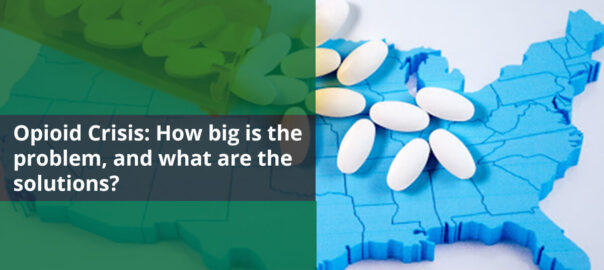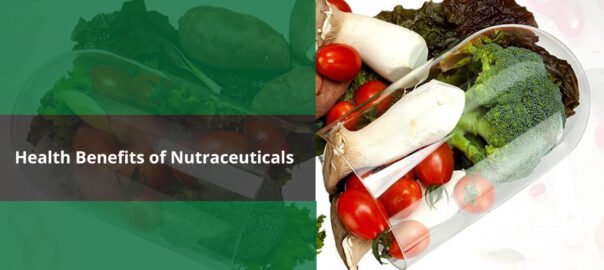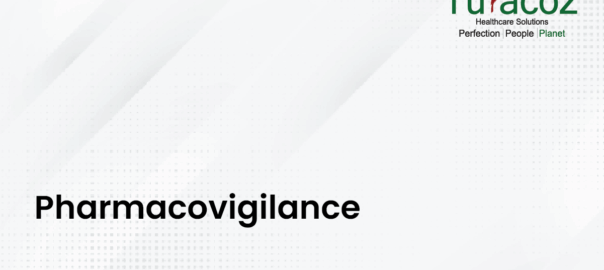What are opioids?
Opioids (Figure 1) are a class of drugs naturally found in the opium poppy plant that acts on the nervous system to produce a variety of effects, including the relief in pain or pleasure.
Opioid Use Disorder: How big is the problem?
Figure 1: Opioids [2]
The clinical term opioid use disorder, also known as opioid abuse, is a multidimensional health issue with complicated causes and no appropriate solution [3]. Therefore, the world is in the midst of an unparalleled, self-inflicted opioid epidemic [1]. In 2016, approximately 275 million people globally used drugs at least once and 27 million people were estimated to be suffering from opioid abuse. In 2015, around 4,50,000 people died as a result of drug use, of which 160,000 were directly related to drug use disorders and about 118,000 with opioid abuse. Approximately, a third and a half of all drug-related deaths are contributed by drug overdose [4].
Drug abuse: What are the contributing factors?
Over-prescription: It is one of the significant factors of drug abuse that not only affects adults but also youngsters and children. People who depend on opioids are most likely to get addicted and experience an adverse event [5]. Opioids are responsible for high proportion of fatal drug overdoses around the world because of their ability to cause respiratory depression and death, which can be identified by a triad of signs and symptoms as depicted in Figure 2.
Figure 2: Signs and symptoms of drug overdoses
Non- genetic factors: Some non-genetic factors also play a role in opioid addiction such as psychiatric disorder, substance abuse, depression, child abuse, or neglect. Certain personality traits such as impulsivity and sensation-seeking also increase the risk of opioid addiction.
Opioid as pain relievers: Easy or unrestricted availability of opioid pain relievers (medications used for pain relief that falls under the category of opioids) is another reason for high opioid abuse. A survey demonstrated that 22% of the respondents had opioids from an active prescription at home and 21% had medications leftover from the previous prescription of which 66% deliberately kept the medications at home in case there is a requirement in the future. Another survey by Thiels et al. found that more than 60% of pills prescribed by healthcare professionals went unused [6]. Few contributing factors that led to the presence of opioids at home were high family income and high caregiver educations. However, some critics say that the prevalence of opioids in home was not affected by one’s relationship with the youth, race, household type or Medicaid insurance [7]. It is essential that a combination of health, social, economic and lifestyle factors interact with genetic factors to determine an individual risk [3].
Opioid abuse: How to resolve the problem?
Basic life support and antagonistic drugs: Fortunately, overdose of opioid can be prevented if the basic life support and naloxone (opioid antagonist) are administered on time. This approach is adopted by many countries and jurisdictions to reduce deaths resulting from an opioid overdose [4].
Appropriate prescription procedures: Emphasis should be made on the proper prescription procedures and expectations of the patient regarding postoperative pain management to bridge the gap of unused opioids. Several approaches are needed to ameliorate the opioid overdose and other problems caused by the opioid abuse if administered measurably (Figure 3) [8]:
Figure 3: Steps to prevent opioid crisis
All these measures are a necessity to abate the opioid crisis. However, only half of the countries provide access to the effective treatment of opioid dependence, and less than 10% of the people who need the treatment are receiving it [8].
Drug abuse: What does WHO recommend?
WHO recommendations to prevent opioid crisis [3] are given below:
- WHO supports countries to administer the treatment where it doesn’t exist and also helps in monitoring trends in drug use and related harm to have a better understanding of opioid dependence and overdose
- WHO supports countries to use the medications rationally, to make the appropriate use of the drug and minimize the misuse/ overuse
- WHO recommends to take measures to alleviate the risk of misuse by a careful patient selection and supervising the doses whenever necessary
- WHO recommends that naloxone should be made available in the rehabilitation centers to manage opioid overdose and the people who are probably to witness an opioid overdose
- WHO provides psychosocial support, promotes detoxification and opioid maintenance treatment (which involves administration of drugs such as methadone and buprenorphine)
- A stepped approach was highlighted to manage the pain in cancer patients namely- the WHO cancer pain ladder that recommends initial use of non-opioids, followed by weak opioids and then strong opioids
Although the appropriate use of opioids is a fundamental part of modern analgesia, but the drug abuse has led the problem spin out of control. While there are people suffering from chronic and acute pain, opiates shall remain an essential class of medication in healthcare facilities. Proper emphasis should be given to understand the reasons why people are using these drugs and offer fewer stigmatizing strategies to assist people who use opioids. A three-point approach emphasizing on the prevention, treatment, and rehabilitation of those already affected and who might be at risk in the future may be the holistic solution. Further investigation and success with the prevention approaches and some new strategies devoted to managing the crisis are required in order to respond effectively to such conditions in the future.
Turacoz Healthcare Solutions aims to provide information on the latest trends, updates, and advances in the field of clinical research, trials and regulatory affairs. Turacoz Healthcare offers end-to-end support for scientific communications, clinical trial documents and disclosures, regulatory documents writing and submissions, and medico-marketing writing along with e-modules & e-books on healthcare and research.
References
- Health resources and service administration: [https://www.hrsa.gov/opioids, Accessed on 16th sep, 2019]
- John Hopkins Medicine Retrieved from: [https://www.hopkinsmedicine.org/opioids/what-are-opioids.html, Accessed on 16th sep, 2019]
- US National Library of Medicine: [https://ghr.nlm.nih.gov/condition/opioid-addiction#resources, Accessed on 16th sep, 2019]
- World Health Organisation Retrieved from: [https://www.who.int/substance_abuse/information-sheet/en/, Accessed on 16th sep, 2019]
- Stoicea, N., Costa, A., Periel, L., Uribe, A., Weaver, T., & Bergese, S. D. (2019). Current perspectives on the opioid crisis in the US healthcare system: A comprehensive literature review. Medicine, 98(20).
- Ziegelmann, M. J., Habermann, E. B., & Gettman, M. T. (2019, May). In Reply—The Importance of Educational Interventions and Regional Analgesia in Tackling the Opioid Crisis in the United States. In Mayo Clinic Proceedings(Vol. 94, No. 5, pp. 921-922). Elsevier.
- Garbutt, J. M., Kulka, K., Dodd, S., Sterkel, R., & Plax, K. (2019). Opioids in Adolescents’ Homes: Prevalence, Caregiver Attitudes, and Risk Reduction Opportunities. Academic pediatrics, 19(1), 103-108.
- Saloner, B., McGinty, E. E., Beletsky, L., Bluthenthal, R., Beyrer, C., Botticelli, M., & Sherman, S. G. (2018). A public health strategy for the opioid crisis. Public Health Reports, 133(1_suppl), 24S-34S.













